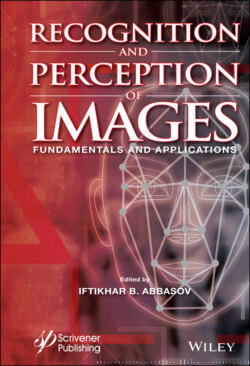Читать книгу Recognition and Perception of Images - Группа авторов - Страница 34
1.4 Space Perception 1.4.1 Monocular Spatial Signs
ОглавлениеThe retina is a two-dimensional curved surface. Despite this, we can estimate the distance of objects in the three-dimensional world. The distance of objects is determined on the basis of some monocular and binocular signs. Spatial signs that are perceived by one eye are called monocular (or pictoral). Monocular spatial signs are mostly static, i.e., when the observer and objects of the field of view are fixed [Gippenreiter, 2002], [Shiffman, 2008], [Abbasov, 2016]. The perception of still scenes, photographs, art paintings is based on static monocular signs. Monocular signs convey the depth of space and distance by visual means, and the observer has an illusion of volume when viewing pictures.
Size of objects. The first monocular feature is the relative size of objects; a smaller object is perceived as more distant.
Interposition. Partial blocking or overlapping of one object by another is called interposition. The object located closer may overlap the objects located behind (Figure 1.4.1). Interposition to determine the relative distance of objects.
Figure 1.4.1 Flat and three-dimensional interposition of one scene.
Aerial perspective. When viewing the surrounding landscapes of objects nearby, we see more clearly than distant objects. This monocular source of information is called the air perspective; it arises due to the scattering of light on the smallest particles of the surface layer of the atmosphere.
Shadow and Luminosity. Close to the light source surfaces of objects have the greatest luminosity. With distance from the light source, the luminosity of the surfaces decreases and their shading increases. The shadow that falls on the surface of the object itself, blocking the light, is called its own. If the shadow of an object falls on another surface, it is called a falling one. These shadows are important signs of the depth of the scene; they tell us information about the shape of objects, the distance between them and the location of the light source.
The work of [Gonzalez, Niechwiej-Szwedo, 2016] describes the influence of monocular vision on the accuracy of coordination of hand movements at the moment of capture. It’s known that the moveable eyes are in motion up to the completion of the movement. The eyes moving to object is analyzed in the space and recognized thus simplifying the control of subsequent movements. However, the monocular vision doesn’t allow the complete determination of the position of the object and hands in the space. Fifteen people who carry out the control action using the video tracker and system of motion capture took part in the experiment. As a result the time for taking the bead and pulling it on the needle at the monocular vision was increased up to 2.5 sec, and in case of binocular vision it was 2 sec. The obtained results prove the defining role of binocular vision in the everyday living of man.
The work of [Luke, Henderson, 2016] considers the influence of significance of visual stimulus content on eye movement. The text, photos of townscapes, landscape pictures and their analogs such as stylized pseudo stimuli were used as the visual stimuli. As a result it was determined that the duration of fixation and saccades amplitude were larger for pseudo stimuli as they need more time to be recognized and perceived.
Linear perspective. In the perception of the depth of space, linear perspective plays an important role. Linear perspective provides for a gradual decrease in the magnitude of distant objects and distances between them. The most obvious example of a linear perspective is railroad rails (Figure 1.4.2) [Website istockphoto, 2020]. Despite the parallelism, it seems that the rails in the distance converge at a point called the vanishing point.
Figure 1.4.2 Linear perspective.
